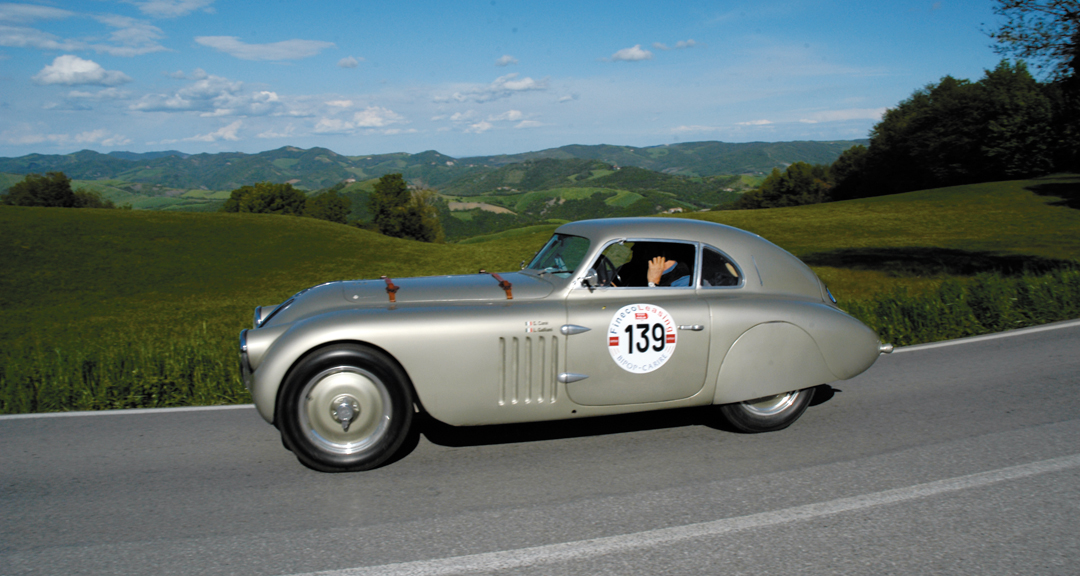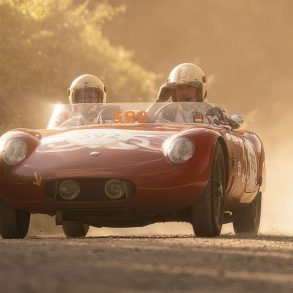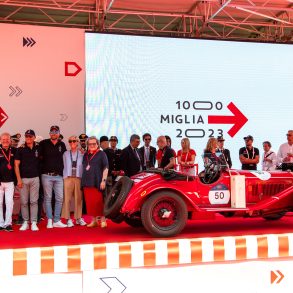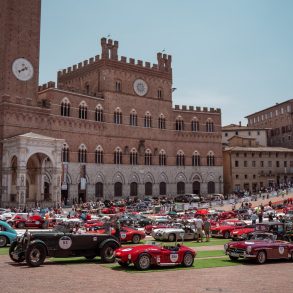Millions of roadside spectators had cheered the 2004 Mille Miglia Storica and its 375 cars and crews from 30 different countries from Brescia to Rome on May 6 and 7 and for much of the following day during his last leg back to Brescia. But the race was abruptly halted soon after midday on May 8 after American driver Harlan Schwartz, 77, was killed and his daughter Alessandra, 32, was injured when their 1932 Alfa Romeo 8C 2300 was involved in an accident at about 12.15 pm on the final day of the colorful event.
According to police reports, Mr. Schwartz was attempting to overtake a 1947 Cisitalia 202 S MM driven by Sasaki Hiroyuki of Japan, in the area of Greve in Chianti, near Florence, when the accident occurred. As he moved out to pass the Cisitalia, a two-seater Smart city coupe was coming towards him from the opposite direction. Mr. Schwartz, police said, tried to return to his own lane, but instead the Alfa Romeo hit the side of the Japanese-entered car, left the road and plunged down an embankment, turning over twice as it did so. Mr. Schwartz was thrown out of the Alfa before it came to rest in undergrowth several feet below the level of the road, and was pronounced dead upon the arrival of one of the race’s medical teams.
The Cisitalia skidded, spun and then reportedly hit the Smart. Mr. Hiroyuki and his co-driver, Todo Makoto, were bruised but otherwise unhurt. The occupants of the Smart, whose names were not made available by the police but are believed to be from California, were only slightly injured.
Immediately upon hearing of the fatal accident, the organizers stopped the race and canceled the last four tests, which were to have taken place in Modena. Instead, competitors drove back to Brescia for a muted parade along the city’s Viale Venezia.
At the time of cancelation, Mille Miglia Storica veteran Giuliano Canè and his wife, Lucia Galliani, were in the lead in a 1939 BMW 328 MM Coupe and were confirmed as the winners, their eighth victory in the commemorative rerun. Second came Argentinean crew Scalise-Scalise in an Aston Martin Le Mans and third were reigning Italian Veteran Car Regularity Champions, father and son Roberto and Andrea Vesco, in their Fiat 508 S Coppa d’Oro.
Emphasising that the Mille Miglia Storica is not a high speed race but one of regularity, its organizer, Costantino Franchi, said: “The regulations are quite clear: every competitor is obliged to respect the Highway Code. If a driver arrives at a control 15 minutes ahead of time, he is penalized 30 minutes and excluded from the event. For the last eight years, 375 cars have competed in the Mille Miglia Storica and we have 6,000 of our people along the route to guarantee safety. We are also helped by a team of 32 police officers and have eight organizers’ cars, which have the job of splitting up competitors into groups. That makes one of our cars for every 60 entrants, and no competitors are permitted to overtake an organizer’s car. To do so would mean immediate exclusion.”
Mr. Schwartz is the second person to have been killed in the 22 Mille Miglia Storica events that have taken place so far. In 1990, William Schanbacher, 53, also from the United States, died after his OSCA MT 4 hit a curb and overturned in Ponte Vecchio, near Brescia.
Submitted by Robert Newman










